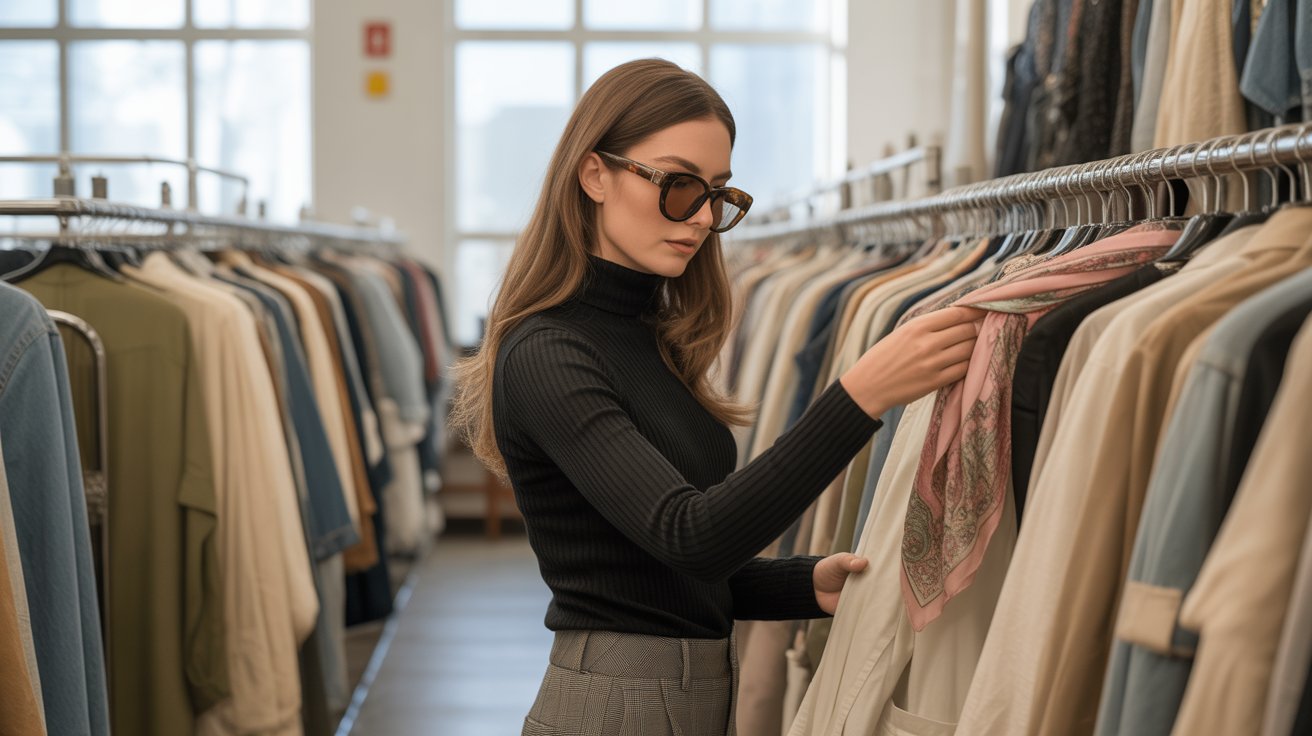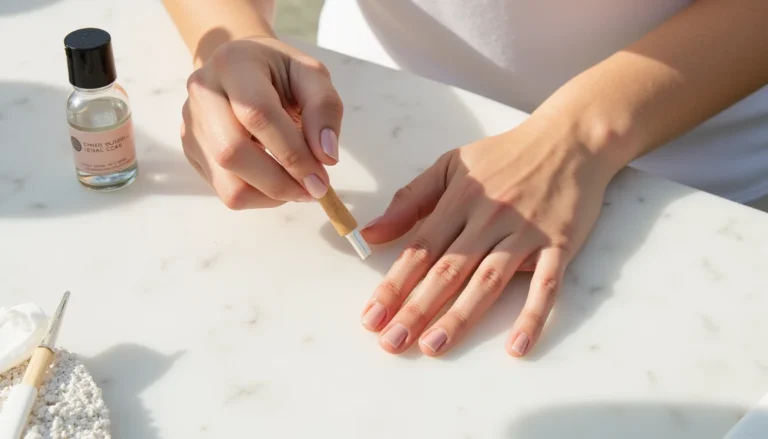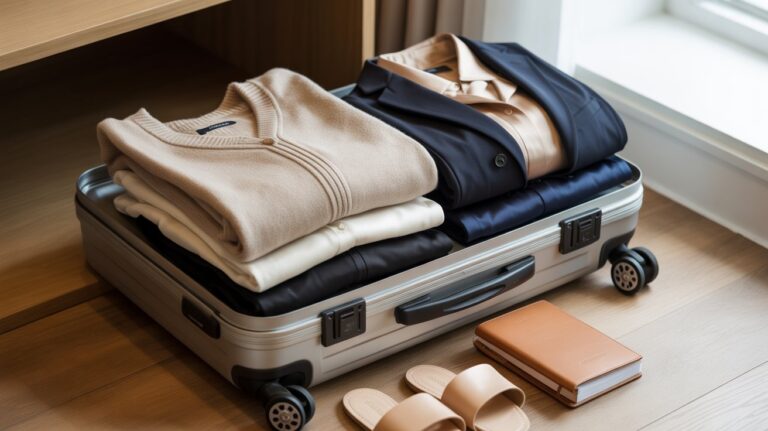How to Spot Quality in Thrift Store Finds (What Fashion Insiders Look For)
Master the art of thrift shopping with professional techniques used by fashion stylists, buyers, and industry insiders to identify true quality pieces that will last decades.
The fashion industry produces approximately 100 billion garments annually, with the majority ending up in landfills within a year. As consumers become increasingly aware of fashion’s environmental impact—with the industry responsible for 10% of global carbon emissions—thrift shopping has emerged as both a sustainable and economically smart alternative.
The Fashion Insider’s Quality Assessment Framework
Professional fashion buyers and stylists use a systematic approach when evaluating garments that goes far beyond the basic “check the label” advice. This 30-second quality assessment technique has been refined by industry insiders over decades.
The 5-Touch Test™
Fashion professionals use this rapid assessment method:
- The Fabric Hand Test: Gently pinch the fabric between your thumb and forefinger. Quality fabrics have what the industry calls “good hand” – they feel substantial without being heavy, smooth without being slippery, and have a certain resilience that cheap fabrics lack.
- The Stretch Recovery Test: Gently stretch a small section of fabric (like a cuff or hem) and release. Quality fabrics snap back immediately to their original shape, while inferior fabrics remain stretched or wrinkled.
- The Seam Integrity Check: Run your finger along a seam while applying gentle pressure. Quality construction will feel smooth and flat, with no puckering or loose threads.
- The Weight Distribution Assessment: Hold the garment by the shoulders and feel how the weight distributes. Well-made pieces hang naturally and feel balanced, while poorly constructed items feel uneven or twisted.
- The Surface Texture Evaluation: Lightly run your palm across the fabric surface. Premium textiles feel consistent and smooth, while lower-quality fabrics may feel rough, uneven, or have a harsh chemical texture.
Professional Grading System
Fashion insiders use an A-F grading system:
- Grade A: Investment-worthy pieces with exceptional construction and materials
- Grade B: High-quality items perfect for regular wear
- Grade C: Good basics with solid construction but standard materials
- Grade D: Acceptable for trendy pieces or temporary wardrobe fillers
- Grade F: Avoid unless for fabric/pattern harvesting
Advanced Fabric Analysis Techniques
While most guides stop at “look for natural fibers,” fashion professionals dig much deeper into fabric quality assessment.
The Fiber Content Hierarchy
Premium Natural Fibers to Prioritize:
- Merino Wool: Look for “Super 100s” or higher designations
- Cashmere: Should feel impossibly soft with minimal pilling
- Silk: Check for terms like “mulberry silk” or “charmeuse”
- Egyptian or Pima Cotton: Superior to regular cotton
- Linen: Belgian or Irish linen commands premium prices
Advanced Fabric Quality Indicators
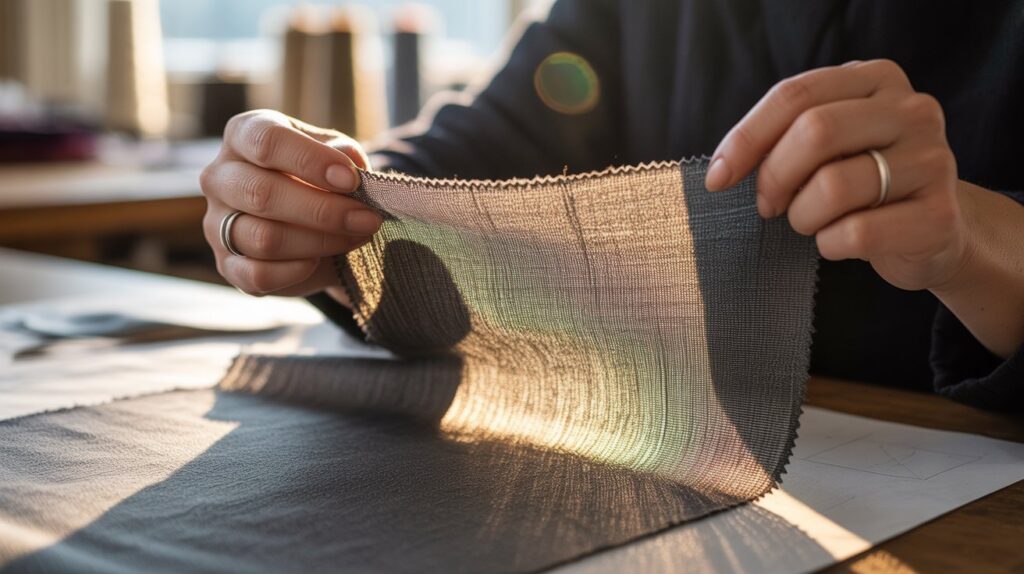
According to research published in Environmental Sciences Europe, textile quality assessment is crucial for determining garment longevity, with fiber content and construction being the primary indicators of durability.
Weave Density Analysis: Hold the fabric up to light. High-quality fabrics have tight, even weaves with minimal light penetration. You shouldn’t see through quality suiting or dress fabrics.
Yarn Quality Assessment: Look closely at the fabric surface. Premium fabrics have consistent yarn thickness and minimal “fuzziness.” Cheap fabrics often have irregular yarn that creates an uneven texture.
Finish Quality: Professional-grade fabrics often have special finishes. Look for:
- Mercerized cotton (has a subtle sheen)
- Brushed wool (soft, directional texture)
- Calendered fabrics (smooth, polished surface)
The Fabric Behavior Test
Experienced buyers perform these quick tests:
- Wrinkle Test: Crumple a small hidden section of fabric in your fist for 5 seconds. Quality fabrics release wrinkles quickly or maintain a structured appearance even when wrinkled.
- Drape Test: Hold a sleeve or hem section and let it fall naturally. Premium fabrics have excellent drape – they fall in natural, graceful folds rather than stiff, awkward shapes.
- Color Saturation Check: Quality fabrics hold dye evenly and deeply. Look for rich, consistent color without fading or uneven saturation, especially in darker colors.
Construction Quality Secrets Professionals Use
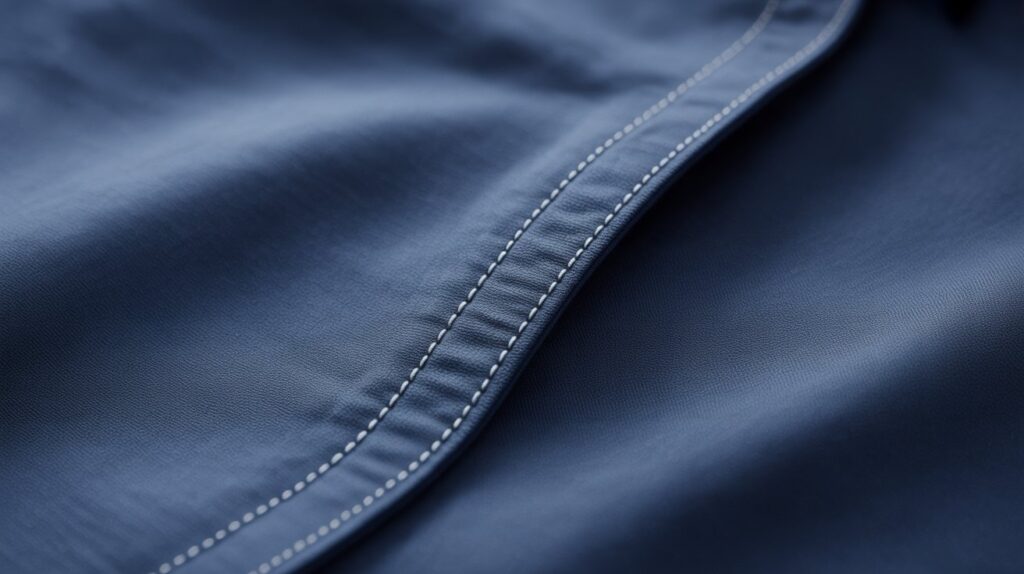
Fashion industry professionals can assess garment construction quality in seconds using techniques unknown to most consumers. Studies in Fashion and Textiles journal consistently show that construction quality is the strongest predictor of garment longevity.
Advanced Seam Analysis
Professional Seam Types to Look For:
- French Seams: Completely enclosed raw edges (found in luxury garments)
- Flat-Felled Seams: Double-stitched and incredibly durable (premium denim and work wear)
- Bound Seams: Raw edges covered with bias tape (high-end formal wear)
- Serged/Overlocked Seams: Clean, professional finish that prevents fraying
The Insider’s Stitching Assessment
Stitch Quality Indicators:
- Stitches Per Inch (SPI): Quality garments typically have 12-16 SPI. Count stitches in a one-inch section.
- Thread Quality: Premium garments use higher-quality thread that doesn’t break easily and matches the fabric perfectly.
- Tension Consistency: Stitches should lie flat without puckering or loose loops.
Hidden Construction Details
Professional Look-For List:
- Stay Stitching: Prevents stretching in curved areas like necklines
- Interfacing Quality: Should feel substantial but not stiff
- Lining Attachment: High-end pieces have hand-sewn lining at stress points
- Button Reinforcement: Quality garments have backing buttons or reinforcement patches
Hardware Assessment
Zipper Quality Indicators:
- YKK or Riri Brand: Industry-standard quality zippers
- Metal Teeth: Generally superior to plastic
- Smooth Operation: Should glide effortlessly without catching
- Proper Installation: No puckering or pulling around zipper area
Brand Intelligence: Beyond the Obvious Designer Labels
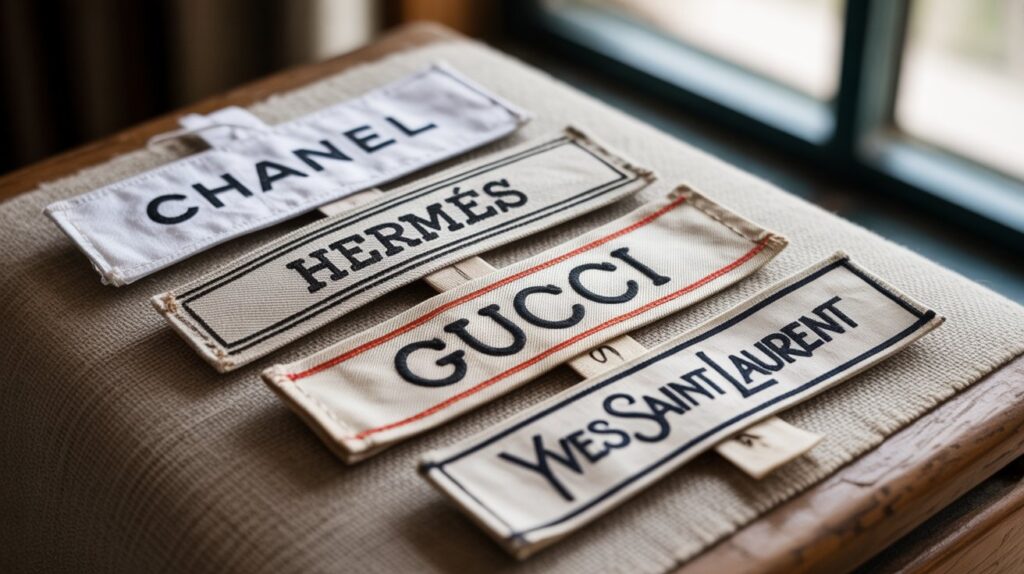
Fashion insiders know that the most valuable thrift finds often aren’t the obvious designer labels everyone recognizes. Research on consumer behavior in secondhand markets reveals that knowledgeable shoppers focus on quality indicators rather than brand recognition alone.
Insider’s Secret: The “Hidden Gem” Brands
Premium Contemporary Brands Often Overlooked:
- COS: Minimalist Swedish brand with exceptional construction
- Everlane: Sustainable luxury basics with transparent sourcing
- Ganni: Danish brand beloved by fashion editors
- Lemaire: Under-the-radar French luxury
- Totême: Swedish brand worn by industry insiders
Vintage Brand Intelligence
Era-Specific Quality Indicators:
1980s Powerhouse Brands:
- Escada (German luxury)
- Thierry Mugler
- Claude Montana
- Issey Miyake Sport lines
1990s Minimalist Gems:
- Helmut Lang
- Jil Sander
- Ann Demeulemeester
- Costume National
2000s Contemporary Gold:
- Acne Studios
- A.P.C.
- Isabel Marant
- Rag & Bone
The Manufacturing Location Secret
Quality Manufacturing Indicators by Location:
- “Made in Italy”: Often indicates superior construction, especially for knitwear and suiting
- “Made in Japan”: Premium denim and innovative textiles
- “Made in Portugal”: High-quality leather goods and footwear
- “Made in Scotland”: Exceptional cashmere and wool products
- “Made in France”: Luxury craftsmanship, especially silk and formal wear
The Professional’s Pre-Shopping Strategy
Fashion industry professionals never shop thrift stores randomly. They use strategic planning that maximizes their time and success rate.
Timing Intelligence
Best Shopping Times (Industry Secrets):
- Monday through Wednesday: Fresh inventory from weekend donations
- First week of each month: After people’s New Year/spring cleaning cycles
- End of fashion seasons: When people donate last season’s unworn pieces
- After major holidays: People clean out closets to make room for gifts
Geographic Strategy
Neighborhood Targeting:
- Affluent Suburbs: Higher-end donations, designer pieces
- College Towns: Trendy pieces, designer items from fashion students
- Business Districts: Professional workwear, suiting
- Arts Districts: Unique vintage, creative pieces
The Insider’s Shopping Kit
Essential Tools Professionals Carry:
- Small LED flashlight (for examining details in poor lighting)
- Tape measure (knowing your exact measurements)
- Smartphone with authentication apps
- Small magnifying glass (for examining labels and stitching)
- Stain removal pen (for testing if spots will come out)
Hidden Quality Indicators Most People Miss
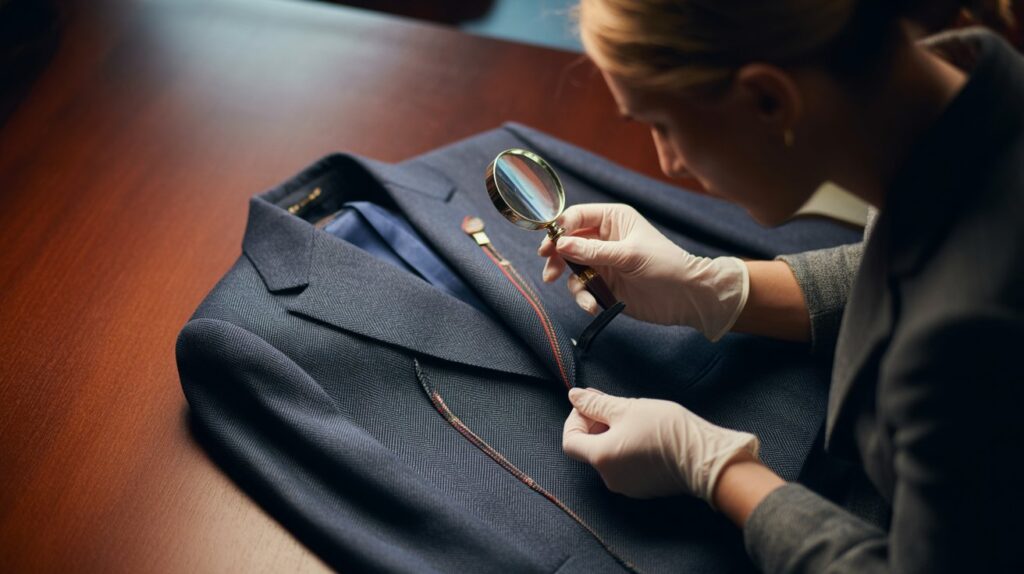
Fashion professionals look for subtle details that indicate exceptional quality – details that average shoppers completely overlook.
Subtle Quality Signals
Advanced Quality Indicators:
- Fabric Pattern Matching: At seams, premium garments have perfectly aligned patterns, especially plaids and stripes. This requires extra fabric and skilled construction.
- Bias Cut Identification: Garments cut on the bias (diagonal to the fabric grain) drape beautifully and indicate advanced pattern-making skills.
- Hand-Finished Details: Look for:
- Hand-sewn buttonholes (often found in luxury suits)
- Hand-attached buttons with shank construction
- Hand-hemmed edges (more flexible and durable than machine hems)
- Functional Buttonholes on Sleeves: Working sleeve buttons indicate higher-end construction.
- Internal Finishing: Check inside pockets, seam finishes, and lining quality. Premium garments are finished beautifully inside and out.
The “Wear Pattern” Assessment
Professional Durability Evaluation:
- Check stress points: elbows, knees, seat, collar
- Look for fabric thinning rather than obvious holes
- Assess pilling patterns (quality fabrics pill less and more evenly)
- Examine color retention in fold areas
Secret Quality Tests
The Professional’s Final Tests:
- Button Security Test: Gently tug each button. Quality garments have secure attachment with reinforcement.
- Pocket Integrity Check: Test pocket openings for reinforcement and proper construction.
- Seam Stress Test: Gently stretch seam areas to ensure they won’t split.
Authentication Techniques for Designer Finds
When you find potential designer pieces, fashion professionals use specific authentication techniques to verify authenticity.
Brand-Specific Authentication Points
Chanel Authentication Checklist:
- Serial number sticker with 8 digits (post-2005)
- Quilting alignment at seams
- Chain weight and construction
- Font consistency on authenticity cards
Louis Vuitton Verification:
- Date code location and format consistency
- Vachetta leather patina progression
- Hardware weight and finish quality
- Alignment of monogram pattern
Hermès Identification:
- Blind stamp location and clarity
- Leather quality and hand-feel
- Hardware weight and finish
- Stitching precision and thread quality
General Authentication Red Flags
Universal Warning Signs:
- Misspelled brand names or inconsistent fonts
- Cheap-feeling hardware
- Poor stitching quality
- Plastic elements where leather/metal should be
- Suspiciously low pricing for the claimed brand
Building a Quality Capsule Wardrobe Through Thrifting
Fashion insiders use thrifting strategically to build cohesive, high-quality wardrobes rather than collecting random pieces.
The Professional’s Priority List
Essential Quality Pieces to Prioritize:
- Investment Outerwear: Wool coats, leather jackets, cashmere sweaters
- Quality Suiting: Blazers and trousers in classic cuts
- Premium Basics: High-quality white shirts, cashmere sweaters, silk blouses
- Statement Accessories: Leather handbags, silk scarves, quality belts
- Timeless Dresses: Classic silhouettes in quality fabrics
Color Strategy for Cohesion
Professional Color Planning:
- Choose 2-3 neutral base colors (black, navy, camel, gray)
- Add 1-2 accent colors that work with your base palette
- Prioritize quality over trendy colors
- Consider your lifestyle and existing wardrobe
The 10-Piece Foundation
Build Around These Quality Essentials:
- Perfect-fitting quality jeans
- White button-down shirt (cotton or silk)
- Black blazer (wool or quality blend)
- Cashmere or merino sweater
- Little black dress
- Quality leather handbag
- Classic trench or wool coat
- Silk scarf
- Quality leather belt
- One statement piece (could be vintage or designer)
Seasonal Shopping Strategies
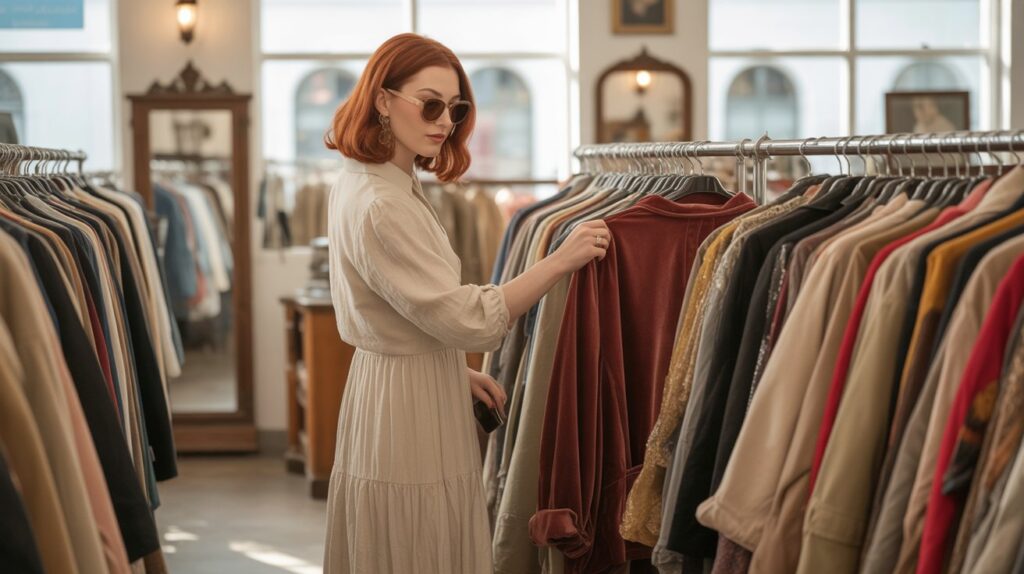
Fashion professionals time their thrift shopping to coincide with donation patterns and seasonal needs. Understanding these cycles is crucial, as research in the Journal of Cleaner Production shows that textile waste patterns follow predictable seasonal trends, creating opportunities for quality finds.
Seasonal Donation Cycles
Spring (March-May):
- People donate winter items
- Look for: wool coats, cashmere sweaters, boots
- Best finds: End-of-season luxury outerwear
Summer (June-August):
- Business wear donations (summer job changes)
- Look for: suiting, professional pieces, accessories
- Best finds: Work-appropriate designer pieces
Fall (September-November):
- Back-to-school closet cleanouts
- Look for: casual wear, trendy pieces, accessories
- Best finds: Contemporary brands, denim
Winter (December-February):
- Holiday gifting motivates donations
- Look for: evening wear, party dresses, accessories
- Best finds: Formal wear, cocktail dresses, jewelry
Counter-Seasonal Shopping
Professional Strategy: Shop for items out of season when competition is low and prices are best:
- Buy winter coats in summer
- Shop for swimwear in fall
- Look for formal wear in spring
- Hunt for business wear during holidays
Caring for Your Quality Finds
Finding quality pieces is only half the battle – proper care ensures they remain valuable investments.
Professional Cleaning Guidelines
Immediate Care Upon Purchase:
- Gentle cleaning: Use appropriate methods for each fabric type
- Professional pressing: Especially for structured pieces
- Proper storage: Cedar blocks, quality hangers, breathable garment bags
- Minor repairs: Address small issues before they become major problems
Long-Term Investment Protection
Maintenance Strategy:
- Develop relationships with quality dry cleaners
- Invest in proper storage solutions
- Learn basic alterations or find a trusted tailor
- Maintain detailed records of care instructions
Mastering the Art of Quality Thrift Shopping
Spotting quality in thrift stores isn’t just about finding designer labels – it’s about developing a professional-level understanding of garment construction, fabric quality, and brand intelligence.
The techniques used by fashion insiders focus on long-term value, craftsmanship excellence, and building a cohesive wardrobe of pieces that will last for years.
By implementing these professional strategies, you’ll transform from a casual thrift shopper into a true connoisseur who can identify exceptional quality pieces that others walk right past.
Remember, the best thrift finds aren’t always the most expensive when new – they’re the ones with superior construction, premium materials, and timeless design that transcend trends.
Academic research on sustainable consumption confirms that knowledgeable consumers who understand quality assessment are more likely to build lasting, sustainable wardrobes through secondhand shopping.
Key Takeaways:
- Use the 5-Touch Test™ for rapid quality assessment
- Look beyond obvious designer labels to find hidden gem brands
- Understand fabric quality at a professional level
- Shop strategically by timing and location
- Build a cohesive capsule wardrobe rather than collecting random pieces
- Invest in proper care to maintain your quality finds
Happy hunting, and remember – the fashion industry’s best-kept secret is that some of the highest quality pieces can be found in the most unexpected places. Now you have the insider knowledge to find them.
Interactive Quality Assessment Tool
🛍️ Thrift Quality Assessment
Evaluate any thrift store find like a pro

